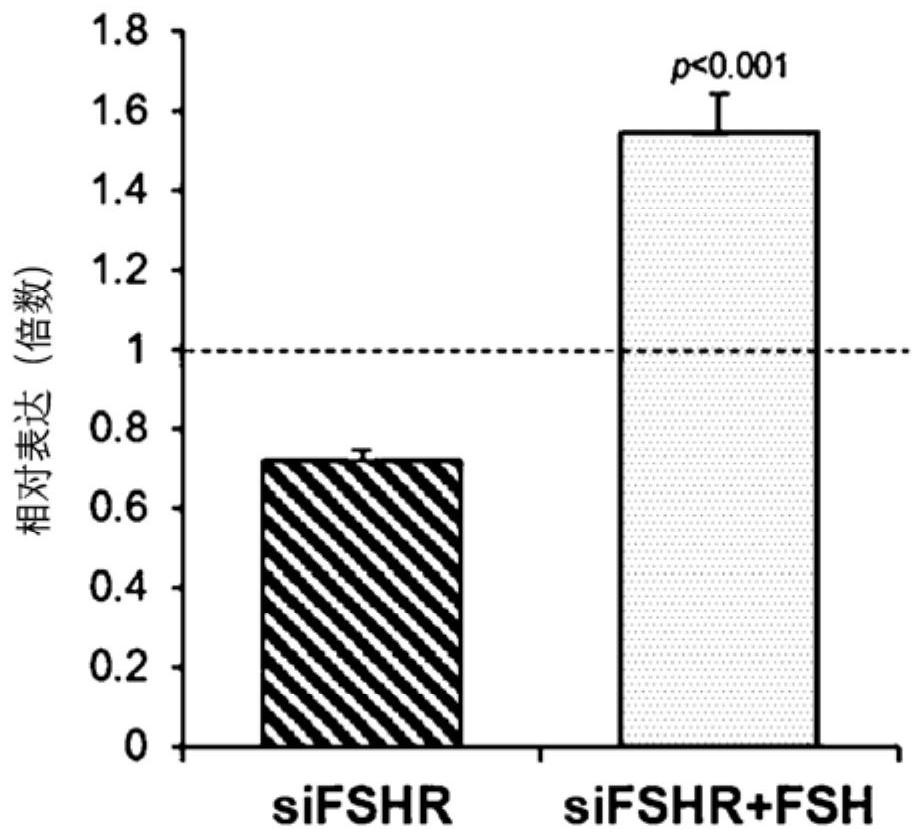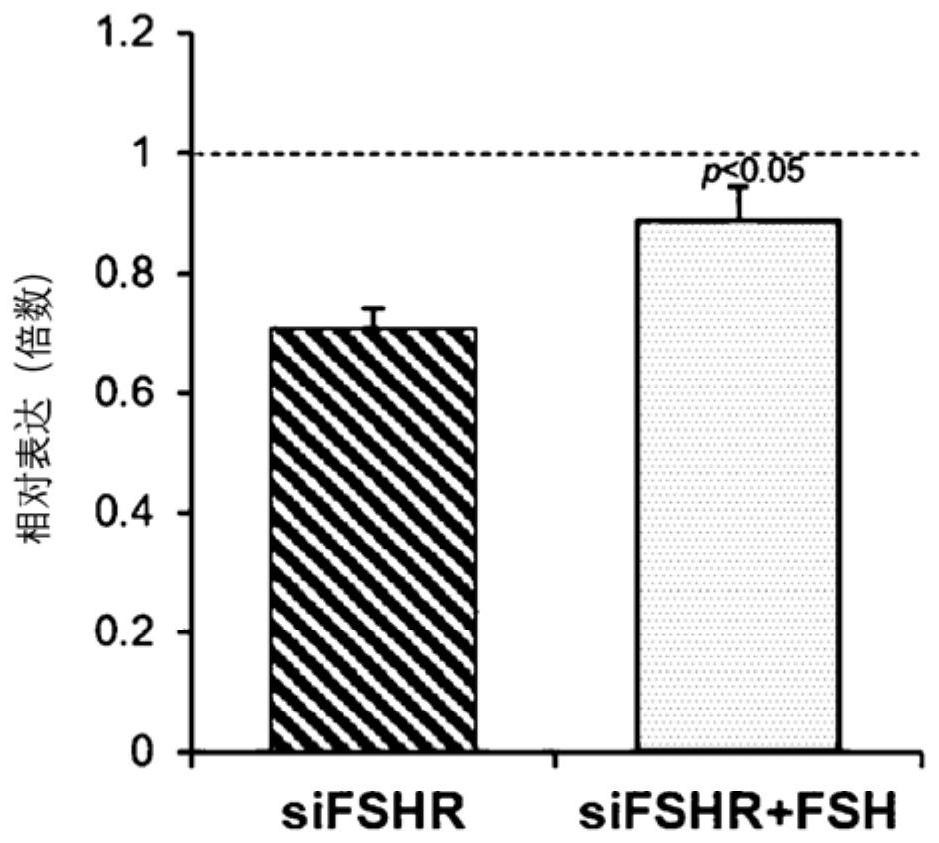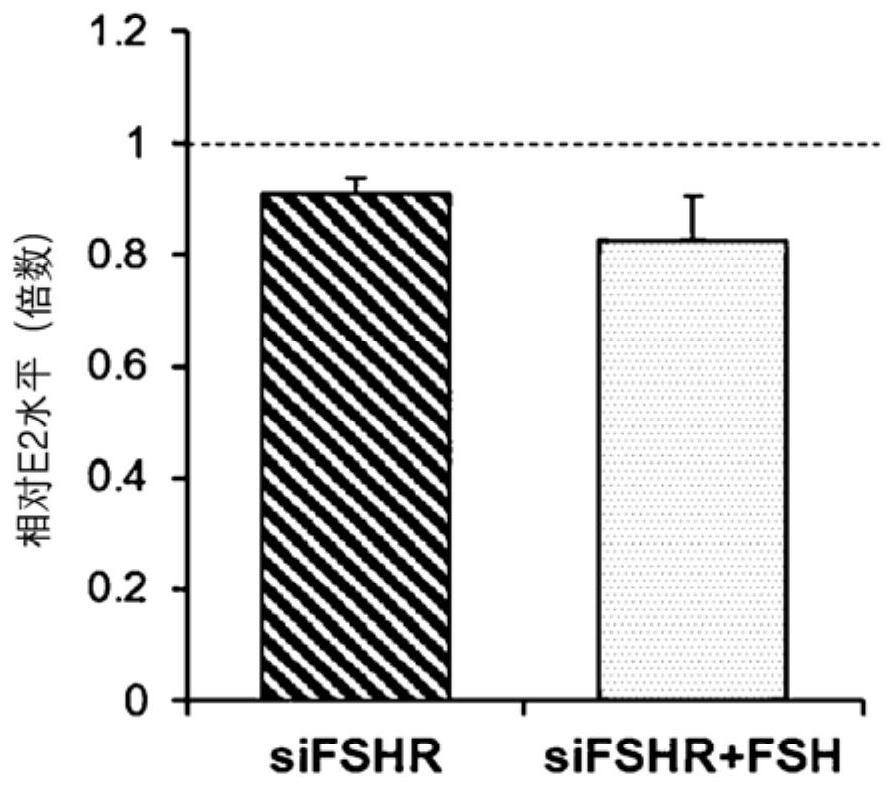Biomarker for diagnosing or predicting reactivity of ovary to fsh and use thereof
A follicle-stimulating hormone-responsive technology, applied in the field of biomarkers and uses thereof for diagnosing or predicting the responsiveness of the ovary to follicle-stimulating hormone, capable of solving problems such as the lack of diagnostic guidelines
- Summary
- Abstract
- Description
- Claims
- Application Information
AI Technical Summary
Problems solved by technology
Method used
Image
Examples
Embodiment 1
[0049] Example 1. Confirmation of the effect of FSH treatment on granulosa cell lines
[0050] 1.1. Cell lines used
[0051] In 2001, Dr. Nishi's team in Japan established KGN cells from ovarian granulosa carcinoma (ovarian granulosa carcinoma), which is a human ovarian granulosa cell-like tumor cell line that exhibits a female reproductive hormone secretion state similar to granulosa cells. Since then, KGN cells have been used in studies requiring large numbers of cells, such as characterization of granulosa cells in females and screening of responses to endocrine-disrupting substances. In this specification, before studying various characteristics of female granulosa cells that are difficult to obtain, through this study, a series of studies were conducted to establish a granulosa cell culture system and accumulate in various germ cells used to increase female reproductive capacity Basic data required in the application. The present inventors used human ovarian granulosa c...
Embodiment 2
[0063] Example 2. Derivation of biomarkers for diagnosis of ovarian insufficiency
[0064] To derive biomarkers for the diagnosis of ovarian insufficiency, differentially expressed miRNAs according to FSH responsiveness were confirmed by miRNA microarray. After extracting the total RNA of the cells and removing the 5'-terminal phosphate group with calf intestinal alkaline phosphatase (Calf IntestinalAlkaline Phosphatase; CIP), the Cy3 fluorescent dye was labeled. The labeled RNA was fully reacted with the microarray slide at 56°C for 16 hours, and then washed. The slides were scanned using an Agilent G2565CA Microarray Scanner System, and then the fluorescence intensity was quantified to analyze differences in miRNA expression between groups. Quantitative values were analyzed after normalization using GeneSpring GX 13.1.
[0065] Specifically, when FSH was separately treated in the KGN cell line as a control group and the KGN cell line in which FSHR expression was suppress...
Embodiment 3
[0077] Example 3. Validation of biomarkers
[0078]Whether the expression of CYP19A1 and ESR1 (ER-α) in granulosa cells was reduced by treatment with MiR-4463 was confirmed as follows. In order to confirm whether miR-4463 treatment changes the secretion of estrogen in granulosa cells, western blotting was used to confirm whether the untreated KGN cell line (MOCK), the KGN cell line treated with miR-4463 mimic (miR- 4463 mimetisome) and the expression levels of CYP19A1, ER-α and ER-β proteins in KGN cell lines treated with miR-4463 inhibitor (miR-4463 inhibitor).
[0079] Figure 4 In order to confirm by Western blot in the untreated control KGN cell line (MOCK), the KGN cell line treated with miR-4463 mimic (miR-4463 mimic) and the KGN cell line treated with miR-4463 inhibitor Graph of expression levels of CYP19A1, ER-α and ER-β proteins in (miR-4463 inhibitor).
[0080] Such as Figure 4 As shown, the expression levels of CYP19A1 and ER-α were significantly reduced by miR...
PUM
 Login to View More
Login to View More Abstract
Description
Claims
Application Information
 Login to View More
Login to View More - R&D
- Intellectual Property
- Life Sciences
- Materials
- Tech Scout
- Unparalleled Data Quality
- Higher Quality Content
- 60% Fewer Hallucinations
Browse by: Latest US Patents, China's latest patents, Technical Efficacy Thesaurus, Application Domain, Technology Topic, Popular Technical Reports.
© 2025 PatSnap. All rights reserved.Legal|Privacy policy|Modern Slavery Act Transparency Statement|Sitemap|About US| Contact US: help@patsnap.com



